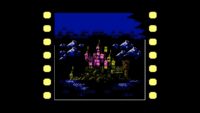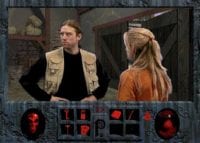The premiere of the new Creepshow TV anthology series from Shudder has horror fans salivating for the opportunity to relive their decades-old experiences with the original 1982 film and its sequel. Luckily for old fans and new audiences alike, the Creepshow series offers visual delights and narrative framing that are evocative of the original films while putting the new show in conversation with contemporary horror literature and modern issues. Also true to the original film’s centering of a child’s rebellious interactions with reading comics, the Creepshow season premiere thematically emphasizes the experience of childhood.
Caution, spoilers ahead. If you have already seen the first episode of Creepshow, read on for plot explication and for an exposition of the new series’ earnest contributions to the literary history of horror film adaptation. If you are still biting your nails in anticipation or are new to the franchise and are thinking “What’s Creepshow?” then check out 25YL horror writer Gus Wood’s article on this first episode for a spoiler-free overview of the two stories featured in Creepshow’s season premiere.

Thematic explication of the Creepshow premiere
An essential thematic element of the original Creepshow film was the role of the child in reading horror that naturally carried over from the film’s allusions to Entertainment Comics, or EC Comics, and the Tales from the Crypt series, in particular. The original’s stories are bookended by an epilogue and prologue that portray a boy who is prohibited from reading ghastly comics by his father but later subversively uses the comics to resist his father’s control over him.
By exploring age-appropriate horror content, children who love to indulge in ghoulish tales (yes, I was once such a child) explore liminal and strange concepts of human identity. If you are reading about the new Creepshow series and wondering if you should watch it with your kids, I would refer you to the IMDb Parents’ Guide for the original film. In short, it is age-appropriate for older children—consider it a more mature grade of the Goosebumps franchise. If the season premiere is any indicator, I will venture to say that these content ratings apply to the entire Creepshow series.
Billy, the boy who rebelliously reads Creepshow comics in the prologue and epilogue to the original film, represents adolescents’ proclivity for incendiary explorations into the mysterious terrain of the adult psyche. The new series foregoes the framing narrative of a child like Billy, who manages to spite his father’s censoring restrictions by absorbing himself in a lurid, imaginative encounter with The Creep. Instead, the season premiere of Creepshow features stories that center the views, experiences, and perspectives of children who are beginning to engage conceptually with the quandaries of adulthood.
They [children] don’t typically like to tell you…what they’re figuring out.
“Gray Matter” revolves around an adolescent’s crushing encounter with his father’s alcoholism. The story cloaks a heartbreaking portrayal of the monstrosity of abusive, substance-dependent parents within a literal typifying of the addict as a mutated monster. Beneath the thrilling and chilling depiction of hideous fungal mutation lies a morality tale about the dangers of psychological reliance on an addicted parent, which generally creates codependency in the child’s personality development.
Creepshow‘s adaptation of this original short story by Stephen King deviates from the source material’s plot in significant ways. In the short story, a heavy snowstorm has descended upon Bangor, Maine, whereas the Creepshow adaptation replaces this extreme weather event with a hurricane. Other significant deviations from the short story’s plot include the number of men who travel from the convenience store to Richie Grenadine (Jesse C. Boyd)’s apartment, an adjusted sequence of events, Richie’s son Timmy (Christopher Nathan)’s complicity in facilitating his mutated father’s cannibalism, and the ending.

In the short story, it is the convenience store owner, Henry, who stays behind to fire his pistol at the mutated Richie Grenadine. No one is sure who was the victor in this standoff because the others in the group hightail it out of there. In the Creepshow adaptation, the viewer and the store manager (Giancarlo Esposito) clearly witness the unnamed police officer played by Tobin Bell being gruesomely subsumed by the monster formerly known as Richie Grenadine. King’s short story employs an open ending, leaving the reader wondering with the characters in the convenience store whether shop owner Henry or the mutated Richie survived. Creepshow decides the ending for us by making it quite clear that the mutated alcoholic will devour everyone who has not already evacuated the town.
Despite the deviations from the original story’s plot, essential elements of the plot remain unchanged and are enhanced by their filmic depiction in Creepshow. The rearranged sequence of events enables the viewer to fully perceive how Timmy is haunted by his father’s alcoholism and transformation. Timmy struggles to contend with the reality of his father’s grisly predilection but is ultimately persuaded by his dependency on his father to facilitate Richie’s cannibalism. Ultimately, Timmy in Creepshow is just as accommodating in providing his father with live humans to feed upon as he was in buying him beer.
The second story featured in the Creepshow season premiere, “The House of the Head,” focuses less on external hazards to a child’s developing identity. Instead, this story meditates on problematic issues of self-identification in a child’s maturing psyche. In this story that centers around a young girl’s interactions with her haunted dollhouse, we see her make every effort to establish authoritative control over her playthings; yet, the dollhouse has a mind of its own and plays its own game of horrific frights and delights. As we watch Evie (Cailey Fleming) try to contend with the dollhouse’s animated self-determination, we relate to her discoveries about the autonomy of the unconscious mind and the inevitability of forbidden thoughts.
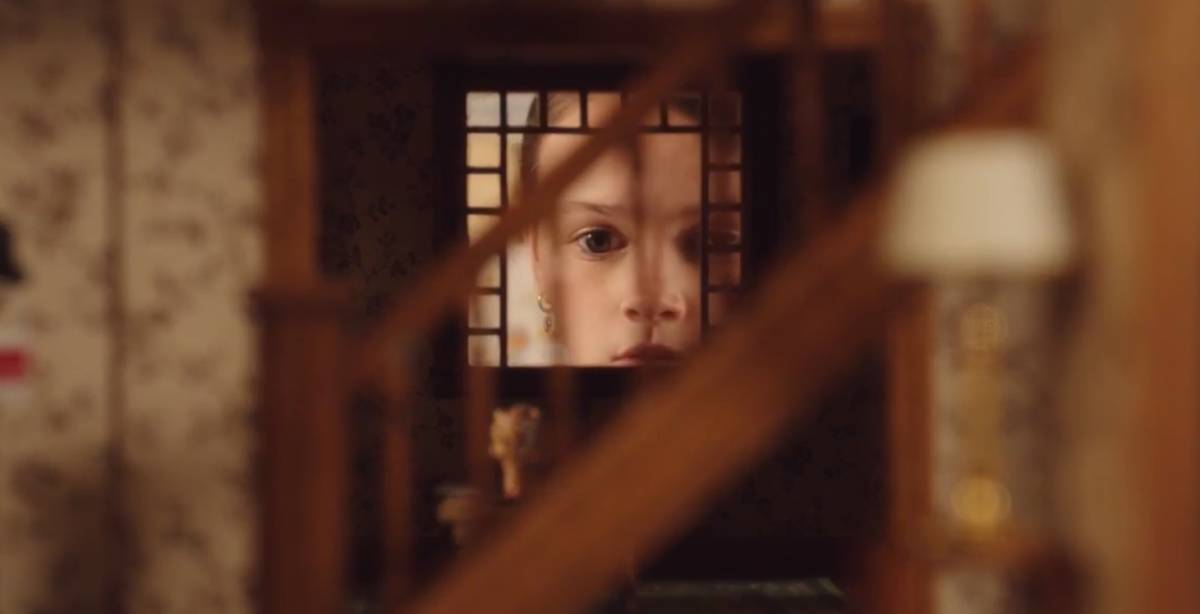
As Evie’s father has pointed out to her mother, children love playing with dolls and action figures. The playful act of controlling small figures in human likeness gives children a sense of power that most of them don’t have in their lived experience. Playing with dolls gives children the opportunity to “engage with and explore their actual world by creating an imaginary one.” At the outset of “The House of the Head,” Evie has a firm command of the placement of her dolls in the dollhouse within specific circumstances that reflect her desires. For instance, she allows the male child doll that she identifies with, Ethan, to have his bedroom in the living room so he can watch TV all night.
The mysterious appearance of rotten, corpse-like severed doll head on the parlor table of the dollhouse—next to what appear to be a miniature booze bottle, ashtray, and leather-bound book—represent a bewildering confluence of cryptic influences that infiltrate Evie’s inner world to disrupt identity and personhood. After the first appearance of the corpse head, her dollhouse comes into a life of its own, and the dolls move around the house when she isn’t looking. They leap out of the bounds of Evie’s control and determination.

From the drama that unfolds in slow motion as depicted by the dolls that move imperceptibly around the dollhouse by their own volition, Evie detects that the atrocious corpse doll head represents a menacing threat to her family of dolls. She makes every effort to restore order in the dollhouse, which was formerly the domain of her conscious control. First, Evie assumes an authoritative voice, instructing the dolls not to move. She then gets her mother to take her on frequent trips to the shop where they buy her hand-made dolls and attempts to enlist the service of other authoritative doll figures to enforce her will.

A climactic emphasis of the severed doll head’s representation of Evie’s discomfort with growing into an adolescent (and, ultimately, adult) identity occurs when the head appears in the dollhouse bathroom mirror. This instance is a subtle yet pointed expression of the fear that abnormality and menace exist within the self. This thematic symbol is underscored when the Native American doll (enlisted by Evie to assist her doll family because he is the most “spiritual” doll in the shop) looks for the severed doll head in the same mirror.

After the inscrutable doll head decapitates all the new dolls she introduces into her playhouse, Evie becomes frustrated and casts the severed doll head to the ground in her room. Realizing that she probably shouldn’t leave this seemingly omnipotent token of evil lying around her room, she searches for it. Evie finds that the doll head has frighteningly enlarged itself to human size. She resolves to place the head back in the dollhouse and then asks her parents to dispose of it. Ultimately, Evie chooses to jettison her psychological mirror and all of the psychic culpability that it portends.
Like Timmy from “Gray Matter,” Evie is unable to contend with the problematic issues that arise in the plot of her story and reverts to a state of dejected complacency. Like in the original Creepshow film, morality tales are cloaked beneath delightfully chilling stories of macabre and mayhem in the new series. Given that such a variety of directors and writers have contributed to the Creepshow series, it is unlikely that the specific theme of centralizing children’s perspectives will persist through all the episodes’ stories. Rest assured, however, that themes explored in future Creepshow stories will resonate soundly with problems of human identity, development, and perception.
An homage in transition
The narrative of the original Creepshow was framed by a boy’s encounters with The Creep, and the new series carries forward with this referential framing device. The season’s first episode opens with The Creep himself descending upon and breaking open a grimy, dust-laden chest that contains old issues of the diegetic Creepshow comic series. As the stories within the comics unfold, the viewer is stylistically reminded that she is watching a film adaptation of a diegetic comic book story. Like the original film series, narrative flashbacks and scene transitions are phased in through a comic book style.
Individual stories are then framed by The Creep playing with or miming the use of symbolic objects that defined the previous story, allowing the viewer to relish in his gruesome ability to titillate and chill us. The new series also carries forward the original’s flirtations with the absurd and the grotesque that enable audiences to grapple with disquieting and repulsive concepts while distancing themselves from a comical, askance perspective. Though chilling and portentous, these tales are so over-the-top that they can be taken lightly and don’t have to haunt your bedside while you try to sleep at night.
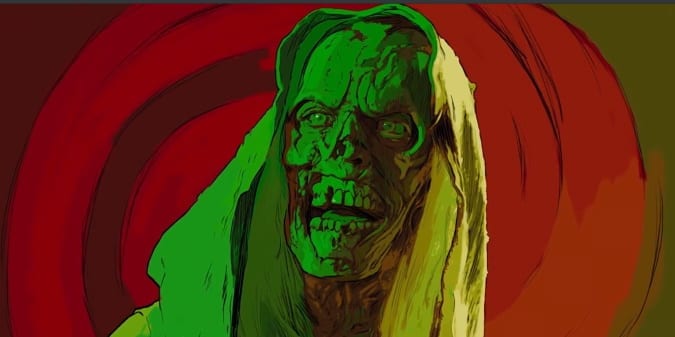
With legendary special make-up effects creators-turned-directors Greg Nicotero and Tom Savini on board to direct three of the series’ episodes, the new Creepshow proves itself to exist within a lineage of classic horror cinema. Nicotero, who is most well-known as director and special effects makeup designer for the AMC series The Walking Dead, produces the new Creepshow series and directs its first and last stories in episodes 1 and 6.
Nicotero first broke into special makeup effects design by working with George A. Romero—director of the original series—and Tom Savini. Savini himself, who also worked closely with Romero, directs the second story of episode 5 in the new series. Incidentally, Tom Savini was recruited by Romero to replicate comic-like effects and to design special makeup effects for the original Creepshow. Savini also, as he is wont to do, appeared in a cameo in the epilogue of the original film. The close involvement of such impressive contributors to classic horror cinema effects proves the new Creepshow’s commitment to the legacy of the original series.
Unlike the original film, which was solely written by Stephen King and directed by Romero, the new series also dedicates itself to showcasing a variety of aptitude and talent in horror writing and directing. The new series features work from no less than nine other directors in addition to Nicotero and Savini. Filmmaker, musician, and composer John Harrison directs the second story of the season premiere, “The House of the Head.” Harrison, too, has a work history with Romero and ties with the original Creepshow, having created the music for the original film. Contributions from an array of newer directors and writers will be showcased throughout the series.
Literary adaptations and short story fiction
Inasmuch as the new Creepshow series platforms a variety of filmmakers and directors, it also provides a venue for newer writers. I mentioned that writer Stephen King was the sole screenwriter for the original film, so it is important to know that the Creepshow season premiere also gives homage to this renowned author. The screenplay for the first story featured in episode 1, “Gray Matter,” is adapted from a short story by Stephen King by screenwriters Byron Willinger and Philip de Blasi.
Stephen King’s “Gray Matter” was first published in the October 1973 issue of Cavalier magazine and was later republished in is 1978 story collection Night Shift. To emphasize the show’s tribute to its monumental precedent writer, “Gray Matter” in Creepshow contains multiple subtle references to King’s work. Stephen King fans who watched the season premiere will have gleefully recognized the allusions to Cujo and to Church—the cat from Pet Sematary—in missing pet posters featured in the opening of the episode.
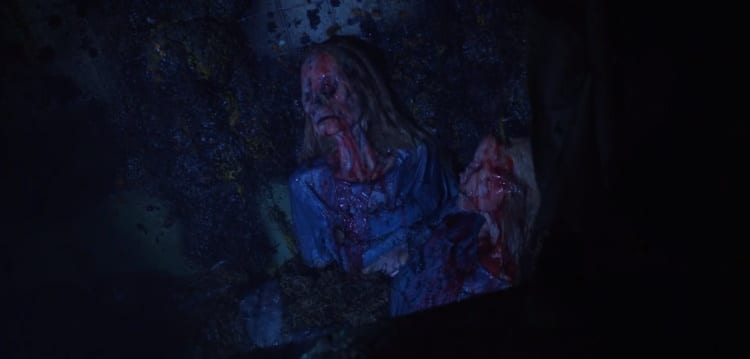
We are left to presume that the formidable Richie Goulding has been snacking on otherworldly pets left and right. More notably, the missing twin girls who we ultimately discover were devoured by Richie Grenadine go by the surname Grady, just like the Grady twins from The Shining who were hacked up by their father, Delbert Grady. This playful connotation with Stephen King’s interconnected literary universe rightfully belongs in an episode that reverently acknowledges the original film’s screenwriter.
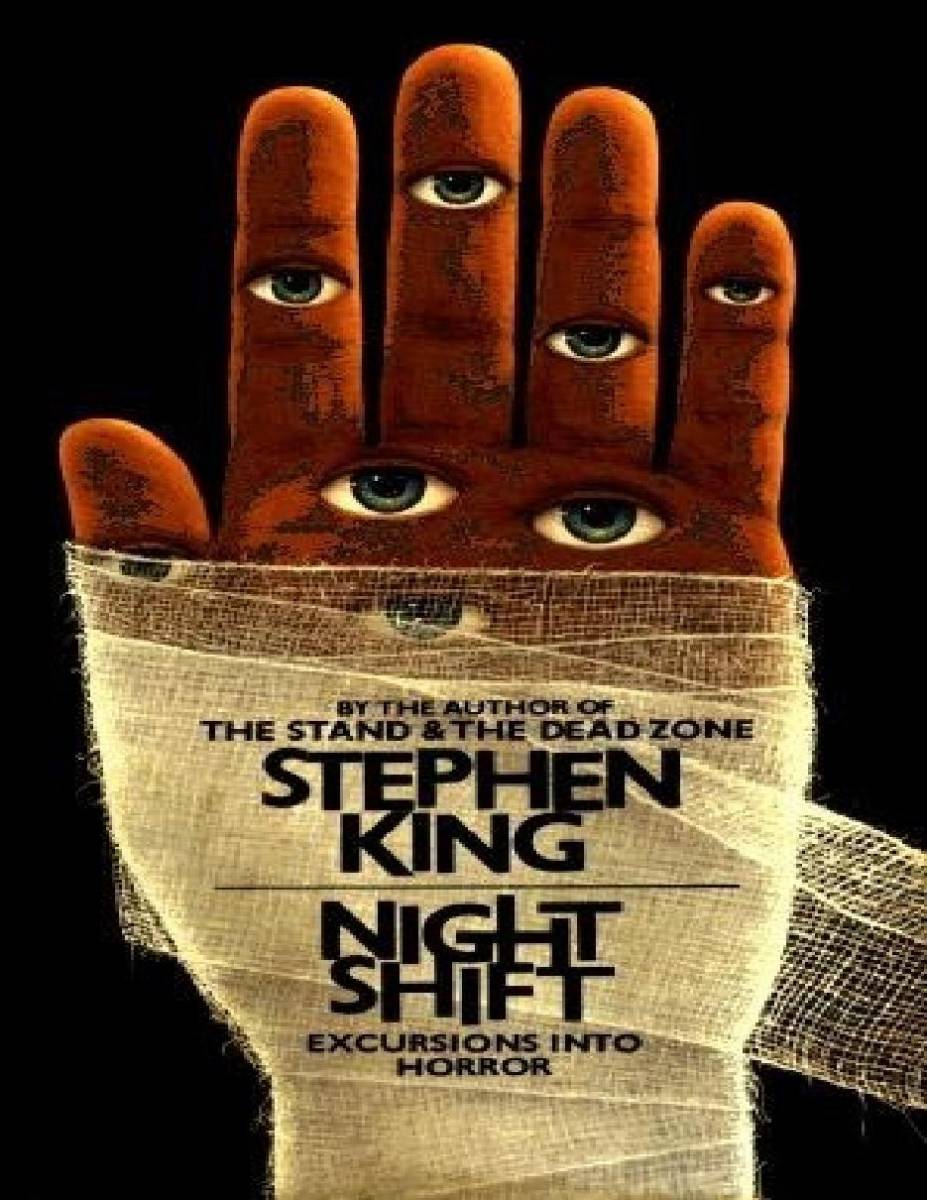
The show subtly announces its intention to pay tribute while featuring new voices by pairing this King homage with a new hit horror writer in its first episode. The second story covered by the premiere, “The House of the Head,” is adapted from a short story for the screen by the story’s author, Josh Malerman.
Malerman is widely known for his 2014 novel Bird Box, which was adapted to the 2018 Netflix Original by the same name. Beyond the singular success of Bird Box, Malerman is a prolific new author who has published six novels, two novellas, and 24 short stories in the past five years. “The House of the Head” was originally published in the 2017 fiction anthology New Fears: Brand New Horror Stories by Masters of Macabre.

Future episodes of the Creepshow series will feature short story fiction from other authors. After “Gray Matter” and “The House of the Head,” film adaptations from five short stories by a variety of contemporary authors and four original stories remain to be screened. I recommend that lovers of ‘all things horror’ take the cue from Creepshow and pursue the new horror fiction featured in this series. If you want more of the dreadful tales featured in the Creepshow premiere, check to see if your local library has a copy of Night Shift, which includes Stephen King’s “Gray Matter,” or if a library near you has a copy of New Fears, which features Josh Malerman’s “The House of the Head.”
Join Gus and me in weeks to come as we analyze individual episodes of the new Creepshow anthology. We are as anxious as you are to discover what grisly tales will unfold in future episodes. If anything, I can bet that the series will expand the tract it has set out for itself in honoring classic horror cinema and literature while showcasing new voices and artists within the genre. More specifically, Creepshow is sure to carry forward its established precedent for honoring the subversive and investigative quality of horror cinema and literature.


